At the end of autumn in Hanoi, the small yet vibrant chamomile flowers signal the coming of winter, creating poetic and romantic scenes. Let’s reveal the secrets of growing and the special meaning of these flowers that only bloom at the beginning of winter.
1 What is Chamomile and When Does it Usually Bloom?
Chamomile flowers, also known as Roman chamomile, are small flowers with the scientific name Matricaria chamomilla and belong to the Asteraceae family.
 Chamomile, also known as Roman Chamomile
Chamomile, also known as Roman Chamomile
Chamomile flowers typically grow wild along fields and roadsides, with fragile yet vibrant stems.
Chamomile has a tall stem with many branches, bearing small, soft, pure white petals surrounding a deep yellow center.
 Besides white, there are also yellow, pink, and purple chamomile varieties.
Besides white, there are also yellow, pink, and purple chamomile varieties.
In addition to the common white chamomile, there are also yellow, pink, and purple varieties. Typically, chamomile season starts in late autumn, around October to November, along with young rice, chrysanthemums, and other flowers that signal the arrival of winter.
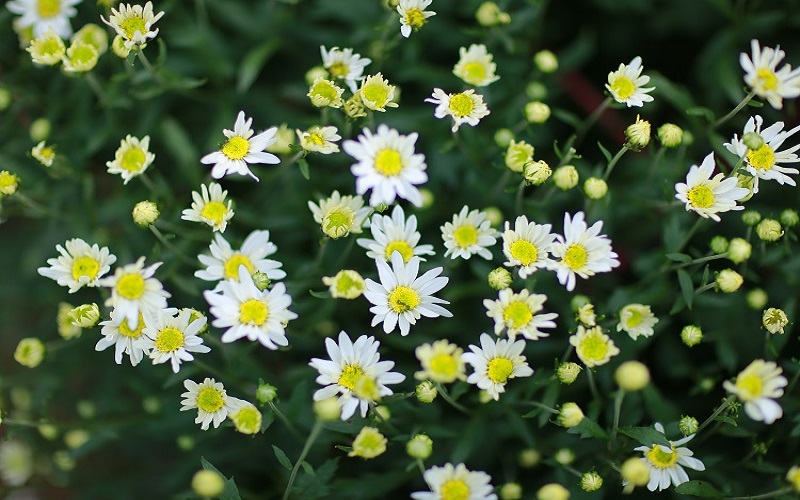 Chamomile blooms in late autumn, around October to November
Chamomile blooms in late autumn, around October to November
If you’re in Hanoi during this time, you’ll spot chamomile flowers blooming in clusters along any street, most notably along the Red River banks and in Tay Tuu flower village.
Unlike other chrysanthemums, chamomile has a very short life cycle. They only bloom during the early days of winter, and after fulfilling their purpose, they wither away within 2-3 weeks.
2 The Significance of Chamomile in Life and Love
Chamomile flowers may appear small, but they are resilient, and their pure white petals symbolize pure, innocent, and uncomplicated love.
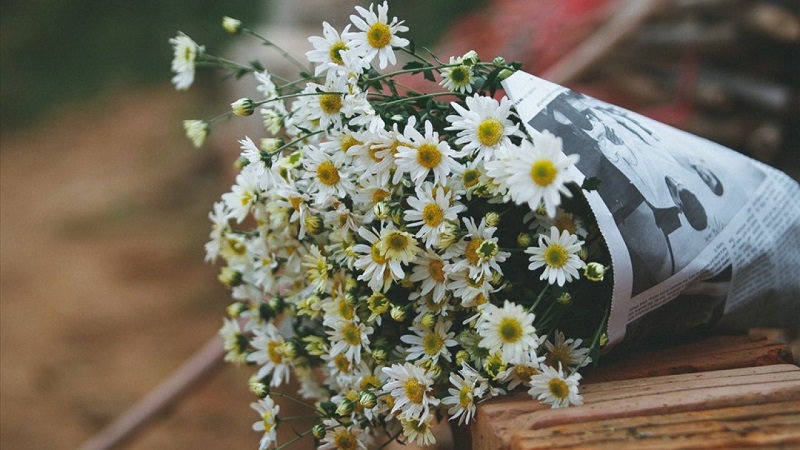 Chamomile also symbolizes prosperity and nobility.
Chamomile also symbolizes prosperity and nobility.
Additionally, chamomile represents prosperity and nobility because they grow in clusters, symbolizing unity and sincerity in friendship. Their short life span also reflects the fragility of life.
3 Who Should You Give Chamomile Flowers To and On What Occasion?
During chamomile season, you’ll find many vendors selling these flowers. Many people buy them to decorate their homes or offices, creating a fresh and inspiring atmosphere. Chamomile flowers are also a wonderful gift for loved ones.
For Your Wife, Lover, or Crush
If it’s your wife, lover, or secret crush’s birthday or anniversary in October or November, give them a bouquet of chamomile flowers. This gesture shows your sincere and romantic love and care for them.
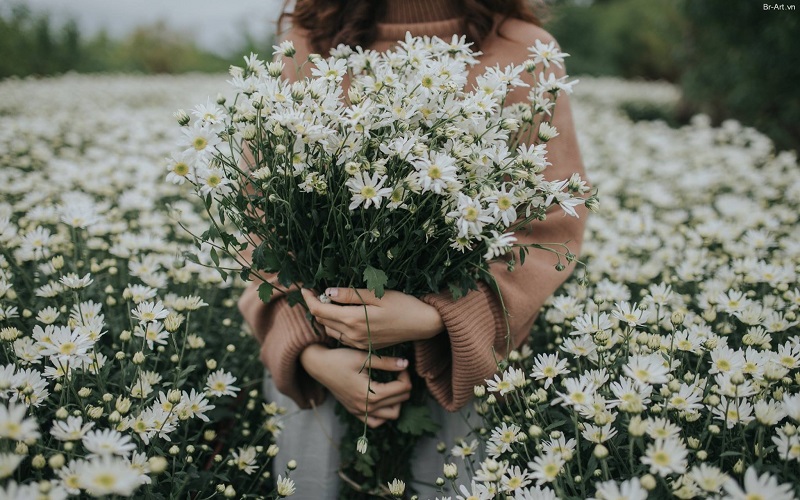 Give a bouquet of chamomile flowers to express your love and care.
Give a bouquet of chamomile flowers to express your love and care.
For Your Best Friend or Colleague
The pure white petals and fresh green leaves of chamomile flowers are perfect for encouraging and wishing your friends or colleagues good luck.
For Your Family
Giving your mother a bouquet of chamomile flowers shows your care and filial piety. Giving chamomile flowers to your sister, whether older or younger, symbolizes the strong bond between siblings.
4 The Practical Uses of Chamomile in Daily Life
Besides their aesthetic value, chamomile flowers have many practical uses and bring numerous benefits to our daily lives.
Making Tea for Detoxification
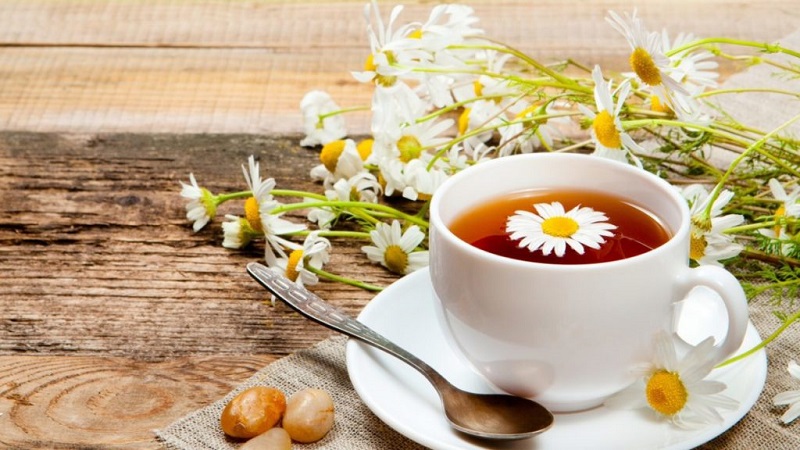 Chamomile flowers can be used to make detox tea and for skincare.
Chamomile flowers can be used to make detox tea and for skincare.
You can make tea by rinsing and drying the flowers. Like other chrysanthemums, chamomile has detoxifying and cooling properties. Simply brew the flowers with licorice root, add a little rock sugar, and simmer for 5 minutes. Strain the mixture, and your detox tea is ready!
Effective Skin Care
Drinking chamomile tea regularly can improve your skin from within, reducing dark circles and blemishes, especially if you tend to stay up late.
Improving Blood Circulation
Add chamomile flowers to your bathwater to enhance blood circulation and promote relaxation. Soak in the bath for 20 minutes, and the flower’s essence will absorb through your skin, leaving you feeling refreshed.
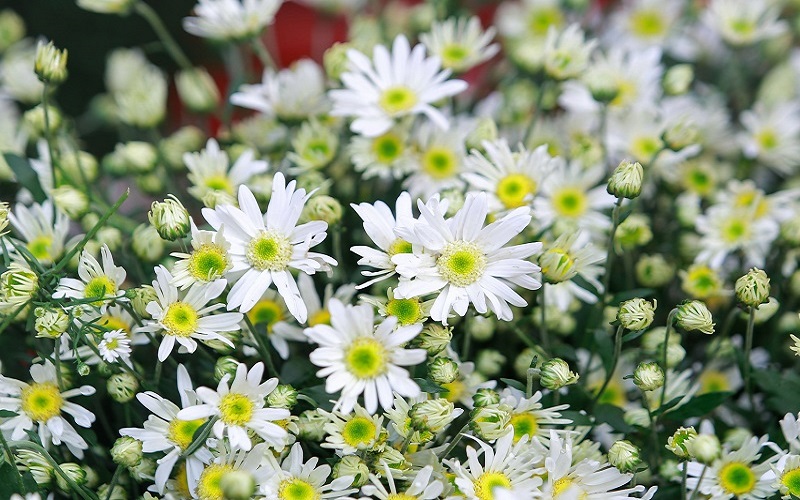 Chamomile also helps with allergies and dry skin.
Chamomile also helps with allergies and dry skin.
Relieving Allergies
If you have sensitive skin that is prone to redness and allergies, chamomile can help. Boil 100g of flowers with a pinch of fresh or dried lemon balm, then let it cool. Use this water to wash your face, forehead, and neck 2-3 times a week for instant relief.
Treating Dry Skin
Chamomile essential oil improves the health of undernourished skin. Crush a sufficient amount of flowers and mix with egg whites. Apply this mixture to your face for 10 minutes, then rinse with clean water. Do this 2-3 times a week for best results.
However, avoid drinking chamomile tea if you’re feeling weak, cold, or experiencing loss of appetite, diarrhea, etc. as it may worsen your condition or cause side effects.
5 Beautiful Chamomile Flower Photos
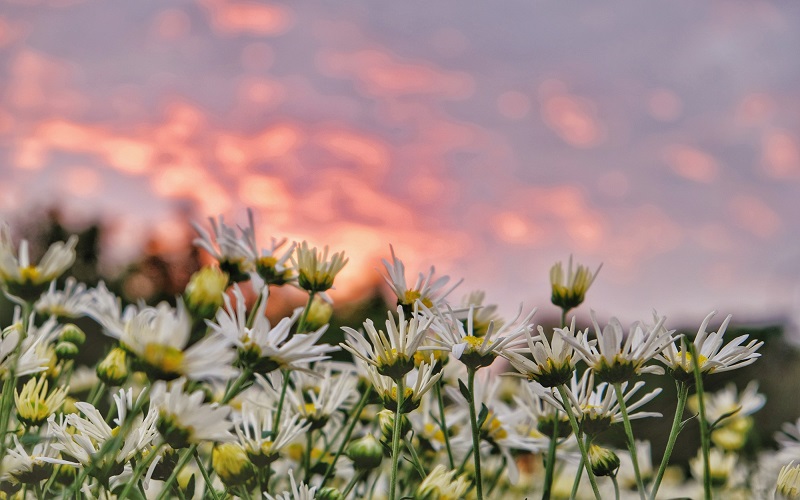 Chamomile flowers at sunset create a romantic atmosphere.
Chamomile flowers at sunset create a romantic atmosphere.
 Pick a bouquet of chamomile flowers for your loved one.
Pick a bouquet of chamomile flowers for your loved one.
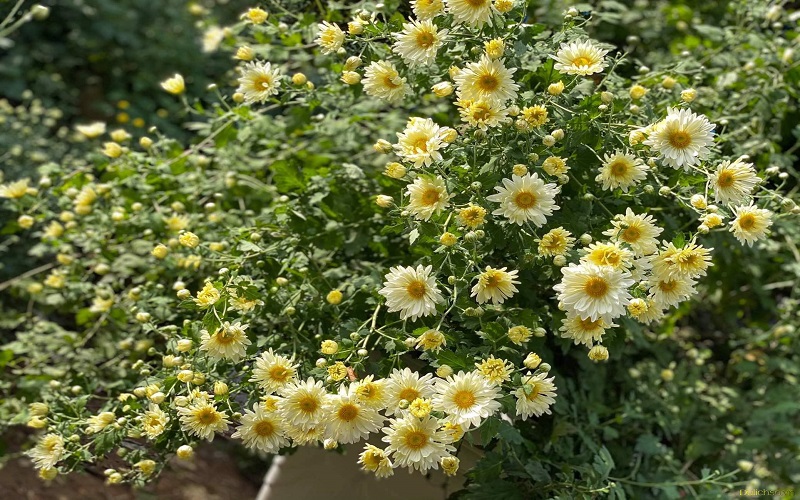 Chamomile flowers with their pure white petals.
Chamomile flowers with their pure white petals.
 Chamomile flowers hold various meanings in life and love.
Chamomile flowers hold various meanings in life and love.
 Chamomile flowers make a thoughtful gift for loved ones.
Chamomile flowers make a thoughtful gift for loved ones.
6 Where and When to Buy Chamomile Flowers
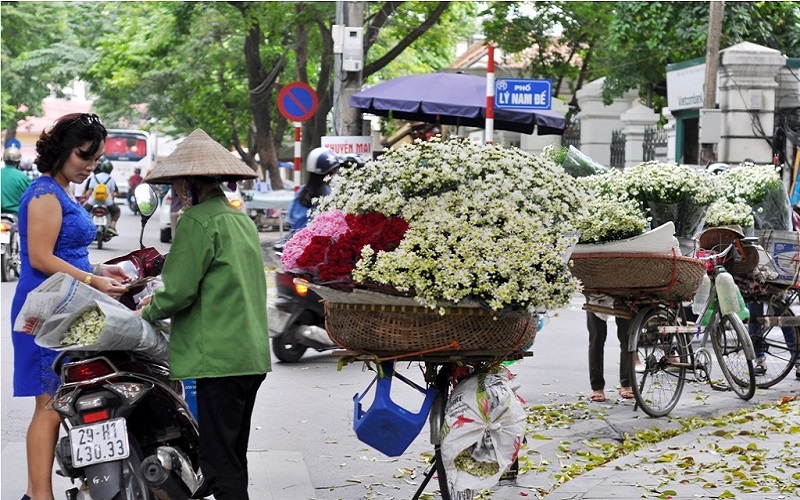 During chamomile season, many street vendors in Hanoi sell these flowers.
During chamomile season, many street vendors in Hanoi sell these flowers.
As chamomile flowers only bloom in October and November, they can be challenging to find outside of these months. In Hanoi, street vendors sell chamomile flowers in the late autumn, and a bouquet typically costs 60,000 – 80,000 VND.
In Ho Chi Minh City, you can find them at Ho Thi Ky flower market in District 10 or reputable flower shops. During the pandemic, you can also order them online from flower delivery websites like hoatuoi360.vn or saigonhoa.com, with prices ranging from 80,000 to 500,000 VND per bouquet.
7 How to Grow Chamomile Flowers
Preparation
- Find good-quality chamomile seeds with a clear origin. Soak the seeds in warm water for 10-15 hours before planting. Smaller seeds do not need to be soaked.
- Prepare a mixture of Akadama soil with small grains, 20%-30% humus, and moss soil in a 1:1 ratio. Ensure the soil retains moisture and has good drainage.
Planting Process
- Sow the seeds at a depth of about 0.5 cm. Maintain a temperature of 20-26°C for optimal germination. The best time to plant chamomile is from September to October. Use a watering can to water the seeds gently without washing them away.
- It takes about 30-40 days for the seeds to germinate and grow leaves. During this time, remove weeds and loosen the soil. Pinch the tips of the plants when they are about 15-20 days old, and repeat the process after at least 15 days.
- Regularly inspect and prune the plants if you spot any pests or diseases. Water the plants with a spray bottle to ensure both the flowers and leaves absorb moisture. Remove secondary buds to encourage larger and more beautiful blooms.
Above are the characteristics and meanings of chamomile flowers. Hopefully, this article has helped you understand more about this unique flower and its benefits in our lives.

































